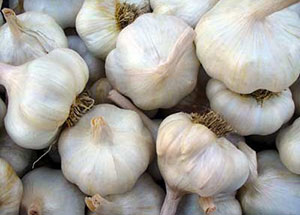
Fact Sheet FS1289
Ultra-Niche Crops are defined as exceptionally high-value crops that can provide a significant source of income to the farmer while using minimal land area.
Garlic (Allium sativum) has had a long and rich history as one of the oldest cultivated crops and has been a staple in many ethnic cuisines. The harvested bulbs are rich in antioxidants and beneficial compounds that are considered to impart health benefits, particularly to the cardiovascular system. Garlic is popular with small commercial growers of specialty crops because it is relatively easy to grow; fits well into a rotating harvest and multifaceted marketing system; has a long shelf life; and is highly valued by consumers.
Selling and Marketing Garlic
Retail commodity garlic prices are in the $1.50–2.50-per-pound range, and organic products are sold at a premium. A rule of thumb is that garlic costs about $1.00–1.25 per pound to produce, but this varies substantially by variety and growing/harvesting method. There are dozens of specialty garlic varieties, some of which have specific culinary purposes. Specialty garlic bulbs can command considerably higher retail and wholesale price points than "commodity garlic", but can also cost more to produce.
Farmer's Tool Box
Essential Equipment/Supplies
- 20 HP tractor with tillage implements (bedmaking, rototiller, soil scoring, sidedressing compost or mineral fertilizers)
- Pesticide spray equipment for herbicides, fungicides, pesticides (tractor implements or backpack sprayer, powered or manual)
- Hand shovels and trowels for soil preparation, fertilization, and bulb harvest
- Sharpened hoes for manual weed control
- Buckets and bleach for tool disinfestation
- Harvesting knives for tender scapes (frequently sharpened with stones and disinfested)
- Wheelbarrows to remove scape and bulb harvests from the field (or cart tractor accessory)
- Dry shed or other enclosure to cure harvested bulbs
- Drying racks
- Planting stock (large, viable, disease-free cloves)
- Plastic mulch (preferably light-filtering to control weeds; live or organic mulch may be used instead)
- Drip irrigation system (alternatively, sprinkler or furrow system may be used at lower cost)
- Organic composts or mineral fertilizers
Fresh garlic bulbs are in high demand across a broad spectrum of demographic groups. For direct marketing businesses, it is advisable to produce and market types that are clearly distinguishable from "mainstream" supermarket garlic products—these are usually white-skinned softneck types. Hardneck and pigmented types will add perceived value. Consult with the local customer base. Different garlic varieties that impart unique culinary factors may be valued by different ethnicities. The quality of harvested garlic bulbs has a direct impact on price. High quality bulbs of specialty varieties can bring a premium price. Establishing a marketing channel with high-end restaurants or farmers markets can greatly impact profits.
Garlic is popular with direct marketing businesses and CSAs, but does not adapt well to Pick-Your-Own (PYO) operations because the garlic field is not inviting. At the time of harvest, the foliage is on the decline. Harvesting aids are needed to dislodge the bulbs from the soil. The excess foliage and need for curing are further factors that make garlic difficult for PYO businesses.
The bulbs may be displayed at room temperature in open bins, since they are rugged and able to sustain contact and handling. Smaller bulbs may be sequestered in mesh bags and sold in larger units. Alternatively, softneck garlic bulbs may be "braided" by the dried foliage and hung from suspended displays. Garlic is a product that attracts customers by virtue of aroma. A display that features bulbs that are peeled and cut will not only demonstrate the value of the product, but also impart volatiles that will attract buyers to the aroma of garlic.
Types of Garlic
Although there are many types of garlic, they can be classified into two broad categories: hardneck (Subspecies: ophioscorodon) and softneck (Subspecies: sativum). As seen in Table 1, each category has several groups with their own characteristics and advantages.
| Desired Characteristic | Category | Group |
|---|---|---|
| Longer Storage | Softneck | Silverskin |
| Braided Bulbs | Softneck | Silverskin |
| High # of cloves per bulb | Softneck | Artichoke |
| Largest cloves | Hardneck | Porcelain |
| Uniform clove size | Hardneck | Rocambole, Porcelain, Purple Stripe |
| Has a scape* | Hardneck | Rocambole, Porcelain, Purple Stripe |
| Cloves peel easily | Hardneck | Rocambole, Porcelain, Purple Stripe |
| Heat tolerant | Softneck | Artichoke |
| Cold tolerant | Hardneck | Rocambole, Porcelain, Purple Stripe |
| Milder flavor | Hardneck | Rocambole |
| Easiest to grow | Softneck | Artichoke |
*May be used as a supplemental food product
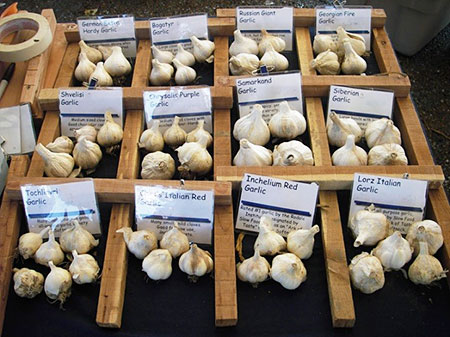
Fig. 1. Hardneck garlic. (Source: growingformarket.com)
Hardneck garlic (Fig. 1) is more closely related to wild garlic and typically has four to twelve cloves around a center flowering stalk. The hardneck stalk, termed the "scape", is topped by a modified floral structure similar to an onion umbel. This modified structure is comprised of a scale covering with tiny aerial bulbils (small bulbs or cloves) attached to the scape. There also may be normal or altered flowers present. Hardneck varieties are usually more flavorful than softneck types, and the cloves can be peeled from the overlying dried skin more easily. The edible hardneck scape provides a milder taste in advance of harvesting the bulbs. For all these reasons, hardneck garlic is favored by many gourmet chefs.
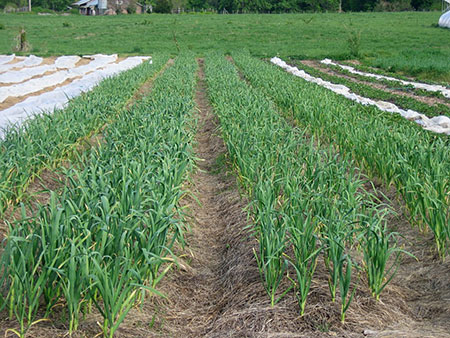
Fig. 2. Softneck garlic. (Source: Kathryn Simmons)
Softneck garlic (Fig. 2) is the more common type that is found in mainstream supermarkets. These varieties do not produce a flower stalk and typically have more cloves per bulb since no energy goes to produce a flower stalk. Softneck varieties are generally easier to grow than hardneck types, and bulbs are typically comprised of ten to forty cloves arranged in multiple layers. Softneck plants may be braided by the dried foliage, providing a natural way to increase product volume and multiple product categories. Also, softneck varieties generally have a longer shelf life than hardneck counterparts—six to eight months as compared with two to four months for hardneck.
Table 2 summarizes the specific varieties that perform well under New Jersey conditions. Varieties are also called "clones" since they are propagated asexually. Theoretically, all individual plants propagated this way should be genetically identical.
| Gategory | Group | Varieties |
|---|---|---|
| Hardneck | Rocambole | 'Killarney Red', 'Spanish Roja' |
| Hardneck | Purple Stripe | 'Chesnock Red', 'Metechi' |
| Hardneck | Porcelain | 'Music', 'German White' |
| Softneck | Artichoke | 'Inchellium Red', 'Lorz Italian' |
| Softneck | Silverskin | 'French Red', 'Rose Du Var' |
What Is Needed to Grow the Crop?
Farmers in a broad geographical range of North America can grow garlic successfully. The optimal soil pH is 6.8 (neutral) with a range of tolerance of 6.4 to 8.0. Garlic can prosper in a wide range of soil types, but a well-drained loam is preferred for high yield, uniform quality, and ease of harvest. Different varieties and planting/harvesting dates will apply depending on the geographic location of the farm and micro-environmental conditions. Organic production is possible in New Jersey and currently being done by a number of direct-to-consumer production operations.
Pathogen-free planting stock is acquired from a reputable source of planting garlic during the late summer. The crop that will be harvested the next production year is planted no later than 3–4 weeks before the first anticipated killing frost. Peeled and separated cloves are placed into tilled soil beds at a spacing of 3–4 inches and 9–24 inch rows. Discard the small and damaged cloves. The "pointed" end of the clove is oriented upward. Approximately 25% of the nitrogen and 100% of the potassium and phosphorus requirements should be incorporated into the soil prior to planting the cloves to utilize during the fall establishment and winter dormancy growth periods. Nutrients may be applied as composted organic materials or in a mineral/granular/soluble form.
Crop Establishment
After planting, the beds should be liberally mulched (1–4") with clean organic materials (such as composted leaves) to insulate the young plants from harsh winter conditions. The mulch will also help to reduce moisture loss and discourage weed growth. After plants begin to re-grow following the winter dormant period, they need about 1 inch per week of water applied via sprinkler or drip irrigation. Water should be withheld as plants begin to mature; this will help to minimize bulb rotting and splitting.
Growing Garlic on Plastic
In an organic system, weeds can become a primary competitor for nutrients and require additional and significant labor costs to remove. Some growers have used non-biodegradable plastic mulch as an alternative weed control. This system can reduce weeds and labor costs and a double row of drip irrigation can be placed below plastic for more even distribution of water and soluble nutrients. Growers should use similar spacing as with open field establishment by creating planting holes only where they are needed. Removal of plastic at the end of the season is necessary on an organic or conventional system.
Soil and Fertility Requirements
The total season crop requirements of major nutrients for garlic are 125 lbs/acre of N (nitrogen), 150 lbs/acre of P (phosphorus), and 150 lbs/acre of K (potassium). All the P and K should be present in the soil and uniformly distributed and available for growing roots at the time of planting. It is beneficial to apply 25% of the N at planting and the other 75% during the subsequent spring and early summer growing phase. The use of composted organic materials to supply these macronutrients will also ensure that adequate micronutrients are also available. If the crop is being grown on sandy soils or under low organic content, supplemental micronutrients may also be needed to bolster yield and quality.
Field Management
The most challenging pest problem with garlic will be weeds, since the crop canopy tends to be very open. This allows abundant sunlight to penetrate to the soil surface and sustain young germinated weeds. As specified above, the use of organic or plastic mulches will discourage weeds. Certain herbicides may be helpful to eliminate weeds, but their successful use requires knowledge and skill. Improper use of herbicides can injure or kill the crop plants. For small commercial production, the use of mulches in combination with hoeing and hand weeding are recommended. The Mid-Atlantic Commercial Vegetable Production Recommendations (RCE Publication E001) is available online and lists potential insect and disease pests for garlic along with cultural and chemical recommended practices.
The most serious arthropod pest problem of garlic is thrips. Both flower thrips and onion thrips will attack garlic foliage. The former species can especially be a problem if the field is adjacent to a spring-harvested alfalfa or grain crop. There are many conventional and OMRI-approved treatments that will discourage and/or minimize thrip populations from building up on garlic (Thrip Management below).
A newly imported arthropod pest, the Allium Leafminer, was identified in the Mid-Atlantic region in 2016 and surveys of backyard allium growers confirmed its presence throughout New Jersey in the spring of 2017. This pest is actively flying and laying eggs very late in the fall (Oct.-Nov.) and very late winter (Feb.-Mar.) when most native pests are dormant. Once eggs hatch it is difficult without systemic insecticides to control the larvae which burrow within the leaf from the tip down to the crown. Damage occurs from loss of leaves, reducing bulb size; direct damage to the bulbs by feeding larvae; and the opening of leaf tissue to secondary infections by pathogens. Control without insecticides is limited to use of floating row cover insect barriers during the adult flight times to reduce egg laying. Other potential problems are lepidopterous larvae (beet armyworm) and onion maggots.
Several disease pathogens can damage garlic, causing for example white rot, botrytis leaf blight, downy mildew, and Fusarium basal rot. Consult RCE publication E001 for methods to treat or avoid these potentially serious conditions. Fundamentally, starting with healthy, clean planting stock; a robust program of crop rotations; and the use of new or sanitized equipment and supplies will be the best strategy for avoidance of disease episodes. Once a disease is detected, it is often already too late to prevent serious or total losses.
Harvest and Yield
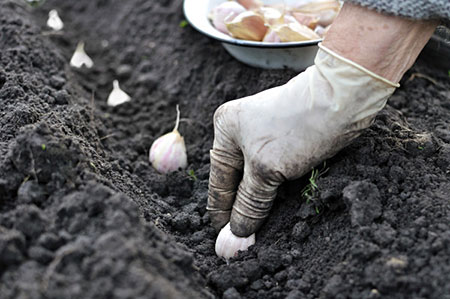
Fig. 3. (Source: Paul Robert)
Following the initiation of new growth in spring, mature bulbs may be harvested 70 to 110 days later depending on variety and growing conditions. Garlic greens (like scallions) may be harvested early from either hard- or softneck types. Hardneck varieties also produce scapes which are the flower stem that forms on the plant. Edible scapes should be harvested when they are tender, before the flower forms, and earlier than the bulb maturity date. Removal of scapes has been shown to improve yields of bulbs. The ideal time to harvest the scape is after the stem loops to form a circle (Fig. 3). If allowed to continue to grow the scape will lose its tenderness.
Typical bulb yields will range from 6,000 to 12,000 lbs. per acre depending on variety, planting density, and growing conditions. Large commercial processors have reported yields as high as 20,000 lbs. per acre. Be sure to purchase or maintain disease-free propagation material. If the crop has exhibited disease symptoms, and particularly virus diseases, it is recommended that the entire crop be sold and new planting stock be acquired for the next planting cycle.
Harvest maturity of bulbs is determined by a combination of the cessation of new foliar growth combined with the appearance of scale tunics, or the papery outer covering around the individual cloves that comprise the bulb. Different varieties will produce bulbs of different size and shape, so size alone is not necessarily the best criterion of maturity. Depending on the size of the plot, available labor and equipment, garlic bulbs may be either hand or mechanically harvested. Hand harvesting is done with the use of a trowel or shovel to loosen the soil under and around the bulb. The foliage may then be used to pull the bulb from the soil. A modified potato or carrot harvester may be used to harvest garlic bulbs more efficiently, or a toolbar spade can undercut the bulbs in combination with hand harvesting. Following the harvest, excess dried bulb scale and soil should be removed by hand.
Postharvest Handling
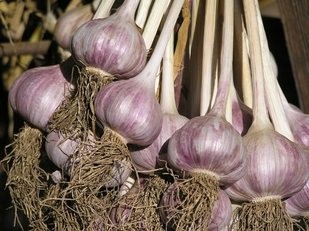
Fig. 4. (Source: gourmetgarlicgardens.com)
After bulbs are harvested, a period of curing is needed. Ideally, curing is accomplished by allowing the bulbs to gradually dry out in a moisture-free environment at 75–85°F (24–29°C). This is accomplished a variety of ways. If the extended weather forecast is dry and mild, the bulbs with attached foliage may be left atop the beds in the field for a period of two weeks (Fig. 4). This is not recommended if frequent and heavy rains occur. Alternatively, harvested bulbs may be placed on mesh racks or hung from suspended wires in protected structures (greenhouses, sheds, etc.); this is the most common method of curing on small-scale New Jersey farms. Curing enhances the quality of bulbs by reducing the content of water, thus concentrating the flavorful components of the bulbs and cloves.
After garlic bulbs are harvested and cured, they may be stored for up to several months under cool, dry, and dark conditions without losing quality. The ideal storage temperature range is 45–60°F (7–16°C). Different varieties respond differently to storage; softneck types typically holding longer than hardneck types. After bulbs are introduced into storage, you should check them every few days to make sure they are not beginning to sprout. The value of bulbs drops significantly after sprouting is evident.
Critical Considerations
- Labor: Garlic requires considerable labor for harvest and cleaning prior to sales and storage.
- Site Selection: The yield and quality of the garlic harvest depends on selecting soils with excellent drainage and organic matter. Avoid growing garlic in same location for at least four years to reduce disease and insect pest problems.
- Product Quality and Profits: Profits depend directly on the quality of the bulbs at sales time, so proper plant spacing, watering, fertilization, harvesting, drying, and storage are all critical factors.
Additional Information
- Engeland, R. L. (1991). Growing great garlic. Filaree Productions, Okanogan, WA, 11-30.
- 2014: Frederick, P., Hlubik, B., and Leviant, E., FS1233 Growing Garlic in the Home Garden, 3pp. https://njaes.rutgers.edu/fs1233
- Meredith, T. (2008). The complete book of garlic: a guide for gardeners, growers, and serious cooks. Timber Press.
- Meyers, M. (2006). Garlic: An Herb Society of America Guide. The Herb Society of America.
- Oregon State's online garlic production guide horticulture.oregonstate.edu/content/garlic-1
- "Rutgers Plant and Pest Advisory Allium Leafminer Alerts" plant-pest-advisory.rutgers.edu/?s=allium+leaf
- University of Minnesota Extension, Vegetable Crop Management, Growing Garlic in Minnesota. www.extension.umn.edu/garden/fruit-vegetable/growing-garlic-in-minnesota
- Wyenandt, A. Mid-Atlantic Commercial Vegetable Production Recommendations. njaes.rutgers.edu/pubs/publication.php?pid=E001
Thrip Management
- ipm.ucanr.edu/PMG/r584300111.html
- jhawkins54.typepad.com/files/garlic_insect_management-weinzierl.pdf (PDF)
- pnva.org/wp-content/uploads/2017/07/ThripsIPMonDryBulbOnions.pdf (PDF)
For more information on this and other Ultra-Niche Crops please visit our website njaes.rutgers.edu/ultra-niche-crops.
April 2018
Copyright © 2024 Rutgers, The State University of New Jersey. All rights reserved.
For more information: njaes.rutgers.edu.
Cooperating Agencies: Rutgers, The State University of New Jersey, U.S. Department of Agriculture, and Boards of County Commissioners. Rutgers Cooperative Extension, a unit of the Rutgers New Jersey Agricultural Experiment Station, is an equal opportunity program provider and employer.


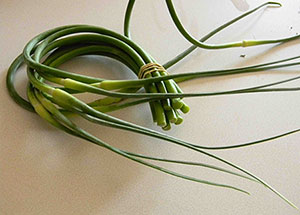
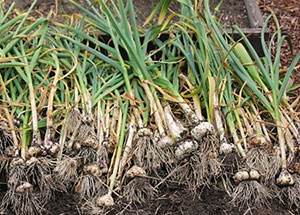
 Project sponsored by the USDA-NIFA Beginner Farmer and Rancher Development Program.
Project sponsored by the USDA-NIFA Beginner Farmer and Rancher Development Program.